Processors for Embedded Vision
THIS TECHNOLOGY CATEGORY INCLUDES ANY DEVICE THAT EXECUTES VISION ALGORITHMS OR VISION SYSTEM CONTROL SOFTWARE
This technology category includes any device that executes vision algorithms or vision system control software. The following diagram shows a typical computer vision pipeline; processors are often optimized for the compute-intensive portions of the software workload.

The following examples represent distinctly different types of processor architectures for embedded vision, and each has advantages and trade-offs that depend on the workload. For this reason, many devices combine multiple processor types into a heterogeneous computing environment, often integrated into a single semiconductor component. In addition, a processor can be accelerated by dedicated hardware that improves performance on computer vision algorithms.
General-purpose CPUs
While computer vision algorithms can run on most general-purpose CPUs, desktop processors may not meet the design constraints of some systems. However, x86 processors and system boards can leverage the PC infrastructure for low-cost hardware and broadly-supported software development tools. Several Alliance Member companies also offer devices that integrate a RISC CPU core. A general-purpose CPU is best suited for heuristics, complex decision-making, network access, user interface, storage management, and overall control. A general purpose CPU may be paired with a vision-specialized device for better performance on pixel-level processing.
Graphics Processing Units
High-performance GPUs deliver massive amounts of parallel computing potential, and graphics processors can be used to accelerate the portions of the computer vision pipeline that perform parallel processing on pixel data. While General Purpose GPUs (GPGPUs) have primarily been used for high-performance computing (HPC), even mobile graphics processors and integrated graphics cores are gaining GPGPU capability—meeting the power constraints for a wider range of vision applications. In designs that require 3D processing in addition to embedded vision, a GPU will already be part of the system and can be used to assist a general-purpose CPU with many computer vision algorithms. Many examples exist of x86-based embedded systems with discrete GPGPUs.
Digital Signal Processors
DSPs are very efficient for processing streaming data, since the bus and memory architecture are optimized to process high-speed data as it traverses the system. This architecture makes DSPs an excellent solution for processing image pixel data as it streams from a sensor source. Many DSPs for vision have been enhanced with coprocessors that are optimized for processing video inputs and accelerating computer vision algorithms. The specialized nature of DSPs makes these devices inefficient for processing general-purpose software workloads, so DSPs are usually paired with a RISC processor to create a heterogeneous computing environment that offers the best of both worlds.
Field Programmable Gate Arrays (FPGAs)
Instead of incurring the high cost and long lead-times for a custom ASIC to accelerate computer vision systems, designers can implement an FPGA to offer a reprogrammable solution for hardware acceleration. With millions of programmable gates, hundreds of I/O pins, and compute performance in the trillions of multiply-accumulates/sec (tera-MACs), high-end FPGAs offer the potential for highest performance in a vision system. Unlike a CPU, which has to time-slice or multi-thread tasks as they compete for compute resources, an FPGA has the advantage of being able to simultaneously accelerate multiple portions of a computer vision pipeline. Since the parallel nature of FPGAs offers so much advantage for accelerating computer vision, many of the algorithms are available as optimized libraries from semiconductor vendors. These computer vision libraries also include preconfigured interface blocks for connecting to other vision devices, such as IP cameras.
Vision-Specific Processors and Cores
Application-specific standard products (ASSPs) are specialized, highly integrated chips tailored for specific applications or application sets. ASSPs may incorporate a CPU, or use a separate CPU chip. By virtue of their specialization, ASSPs for vision processing typically deliver superior cost- and energy-efficiency compared with other types of processing solutions. Among other techniques, ASSPs deliver this efficiency through the use of specialized coprocessors and accelerators. And, because ASSPs are by definition focused on a specific application, they are usually provided with extensive associated software. This same specialization, however, means that an ASSP designed for vision is typically not suitable for other applications. ASSPs’ unique architectures can also make programming them more difficult than with other kinds of processors; some ASSPs are not user-programmable.
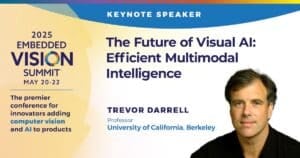
“The Future of Visual AI: Efficient Multimodal Intelligence,” a Keynote Presentation from Trevor Darrell
Trevor Darrell, Professor at the University of California, Berkeley, presents the “Future of Visual AI: Efficient Multimodal Intelligence” tutorial at the May 2025 Embedded Vision Summit. AI is on the cusp of a revolution, driven by the convergence of several breakthroughs. One of the most significant of these advances is… “The Future of Visual AI:

Akida Exploits Sparsity For Low Power in Neural Networks
This blog post was originally published at BrainChip’s website. It is reprinted here with the permission of BrainChip. In the rapidly evolving field of artificial intelligence, edge computing has become increasingly vital for deploying intelligent systems in real-world environments where power, latency, and bandwidth are limited: we need neural network models to run efficiently. For

Infineon Technologies, NXP, and STMicroelectronics Face Rising Competition in $132 Billion Automotive Semiconductor Race
This market research report was originally published at the Yole Group’s website. It is reprinted here with the permission of the Yole Group. Yole Group’s Automotive Semiconductor Trends 2025 report maps the competitive shifts in semiconductors reshaping the future of automotive electronics. KEY TAKEAWAYS Top five players hold roughly 50% of the automotive semiconductor market,

Chips&Media Launches Cframe60: Lossless and Lossy Frame Compression Standalone Hardware IP
2025-08-21 – Chips&Media is announcing that CFrame60 will be delivered to market as an independent product; new HW core based on compression/decompression technology to contribute performance, DRAM bandwidth, and power efficiency within various multimedia applications. Key notes: Significant DRAM bandwidth reduction between IP modules within imaging application Lossless as well as lossy, with no visual quality

Snapdragon Ride: A Foundational Platform for Automakers to Scale with the ADAS Market
This blog post was originally published at Qualcomm’s website. It is reprinted here with the permission of Qualcomm. The automotive industry is well into the transformation of vehicle architectures and consumer-driven experiences. As the demand for advanced driver assistance systems (ADAS) technologies continues to soar, Qualcomm Technologies’ cutting-edge Snapdragon Ride Platforms are setting a new standard for automotive
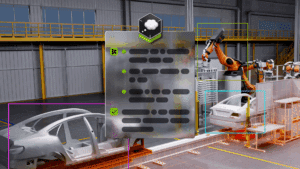
Maximize Robotics Performance by Post-training NVIDIA Cosmos Reason
This blog post was originally published at NVIDIA’s website. It is reprinted here with the permission of NVIDIA. First unveiled at NVIDIA GTC 2025, NVIDIA Cosmos Reason is an open and fully customizable reasoning vision language model (VLM) for physical AI and robotics. The VLM enables robots and vision AI agents to reason using prior

“Introduction to Shrinking Models with Quantization-aware Training and Post-training Quantization,” a Presentation from NXP Semiconductors
Robert Cimpeanu, Machine Learning Software Engineer at NXP Semiconductors, presents the “Introduction to Shrinking Models with Quantization-aware Training and Post-training Quantization” tutorial at the May 2025 Embedded Vision Summit. In this presentation, Cimpeanu explains two neural network quantization techniques, quantization-aware training (QAT) and post-training quantization (PTQ), and explains when to… “Introduction to Shrinking Models with

Advanced Packaging Fuels Transformation in Back-end Equipment: TCB and Hybrid Bonding to Lead $1.3 Billion Market Expansion by 2030
This market research report was originally published at the Yole Group’s website. It is reprinted here with the permission of the Yole Group. Yole Group releases the first edition of its Status of the Back-End Equipment Industry Report, offering a strategic outlook on the semiconductor market. KEY TAKEAWAYS 2025-2030 period: The global back-end equipment market
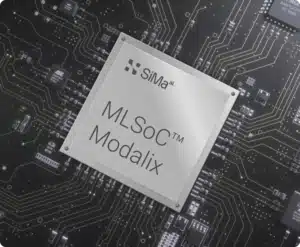
Implementing Multimodal GenAI Models on Modalix
This blog post was originally published at SiMa.ai’s website. It is reprinted here with the permission of SiMa.ai. It has been our goal since starting SiMa.ai to create one software and hardware platform for the embedded edge that empowers companies to make their AI/ML innovations come to life. With the rise of Generative AI already
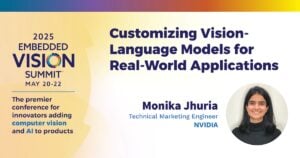
“Customizing Vision-language Models for Real-world Applications,” a Presentation from NVIDIA
Monika Jhuria, Technical Marketing Engineer at NVIDIA, presents the “Customizing Vision-language Models for Real-world Applications” tutorial at the May 2025 Embedded Vision Summit. Vision-language models (VLMs) have the potential to revolutionize various applications, and their performance can be improved through fine-tuning and customization. In this presentation, Jhuria explores the concept… “Customizing Vision-language Models for Real-world

XR Tech Market Report
Woodside Capital Partners (WCP) is pleased to share its XR Tech Market Report, authored by senior bankers Alain Bismuth and Rudy Burger, and by analyst Alex Bonilla. Why we are interested in the XR Ecosystem Investors have been pouring billions of dollars into developing enabling technologies for augmented reality (AR) glasses aimed at the consumer market,

The Chiplet Consolidation Wave: How Strategic Acquisitions are Shaping the Future of Silicon
The Disaggregation of the Monolith: A New Paradigm Forged by AI’s Demands The semiconductor industry is navigating its most significant architectural shift in decades, a transition compelled by the relentless demands of Generative AI. The monolithic System-on-Chip (SoC), the reigning paradigm for half a century, is fracturing under the weight of exponentially growing AI models
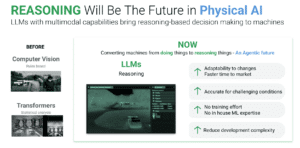
The Era of Physical AI is Here
This blog post was originally published at SiMa.ai’s website. It is reprinted here with the permission of SiMa.ai. The AI landscape is undergoing a monumental shift. After a decade where AI flourished in the cloud, scaled by hyperscalers, we are now entering the era of Physical AI. Physical AI is poised to touch every facet

OpenAI’s gpt-oss-20b: Its First Open-source Reasoning Model to Run on Devices with Snapdragon
This blog post was originally published at Qualcomm’s website. It is reprinted here with the permission of Qualcomm. At Qualcomm Technologies, we’ve long believed that AI assistants will be ubiquitous, personal and on-device. Today, we’re excited to share a major milestone in that journey: OpenAI has open-sourced its first reasoning model, gpt-oss-20b, a chain-of-thought reasoning

Arm Neural Technology Delivers Smarter, Sharper, More Efficient Mobile Graphics for Developers
News Highlights: Arm neural technology is an industry first, adding dedicated neural accelerators to Arm GPUs, bringing PC-quality, AI powered graphics to mobile for the first time – and laying the foundation for future on-device AI innovation Neural Super Sampling is the first application, an AI-driven graphics upscaler that enables potential for 2x resolution uplift

Data Center Semiconductor Trends 2025: Artificial Intelligence Reshapes Compute and Memory Markets
This market research report was originally published at the Yole Group’s website. It is reprinted here with the permission of the Yole Group. Yole Group publishes its new report, Data Center Semiconductor Trends 2025, offering an in-depth analysis of how AI, HPC, and hyperscaler demand are driving a new semiconductor paradigm. KEY TAKEAWAYS A $500
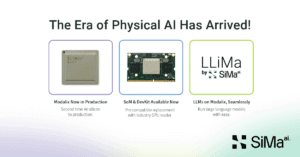
SiMa.ai Next-Gen Platform for Physical AI in Production
Modalix in Production, Now Shipping SoM Pin-Compatible with leading GPU SoM, Dev Kits, and LLiMa for Seamless LLM-to-Modalix Integration SAN JOSE, Calif., August 12, 2025 — SiMa.ai, a pioneer in Physical AI solutions, today is making three significant product announcements to accelerate the scaling of Physical AI. Production and immediate availability of its next-generation Physical

R²D²: Boost Robot Training with World Foundation Models and Workflows from NVIDIA Research
This blog post was originally published at NVIDIA’s website. It is reprinted here with the permission of NVIDIA. As physical AI systems advance, the demand for richly labeled datasets is accelerating beyond what we can manually capture in the real world. World foundation models (WFMs), which are generative AI models trained to simulate, predict, and

NVIDIA Opens Portals to World of Robotics With New Omniverse Libraries, Cosmos Physical AI Models and AI Computing Infrastructure
New NVIDIA Omniverse NuRec 3D Gaussian Splatting Libraries Enable Large-Scale World Reconstruction New NVIDIA Cosmos Models Enable World Generation and Spatial Reasoning New NVIDIA RTX PRO Blackwell Servers and NVIDIA DGX Cloud Let Developers Run the Most Demanding Simulations Anywhere Physical AI Leaders Amazon Devices & Services, Boston Dynamics, Figure AI and Hexagon Embrace Simulation and Synthetic Data Generation August 11, 2025—SIGGRAPH—NVIDIA

Collaborating With Robots: How AI Is Enabling the Next Generation of Cobots
This blog post was originally published at Ambarella’s website. It is reprinted here with the permission of Ambarella. Collaborative robots, or cobots, are reshaping how we interact with machines. Designed to operate safely in shared environments, AI-enabled cobots are now embedded across manufacturing, logistics, healthcare, and even the home. But their role goes beyond automation—they

